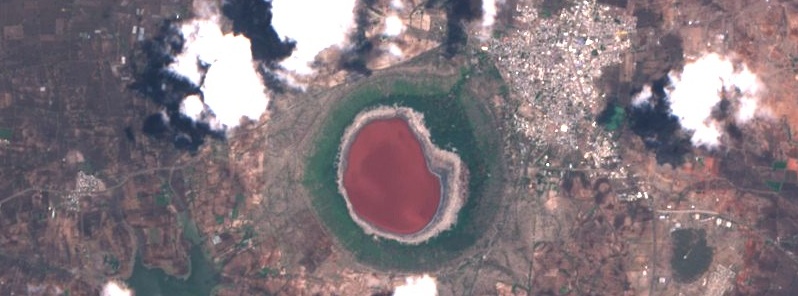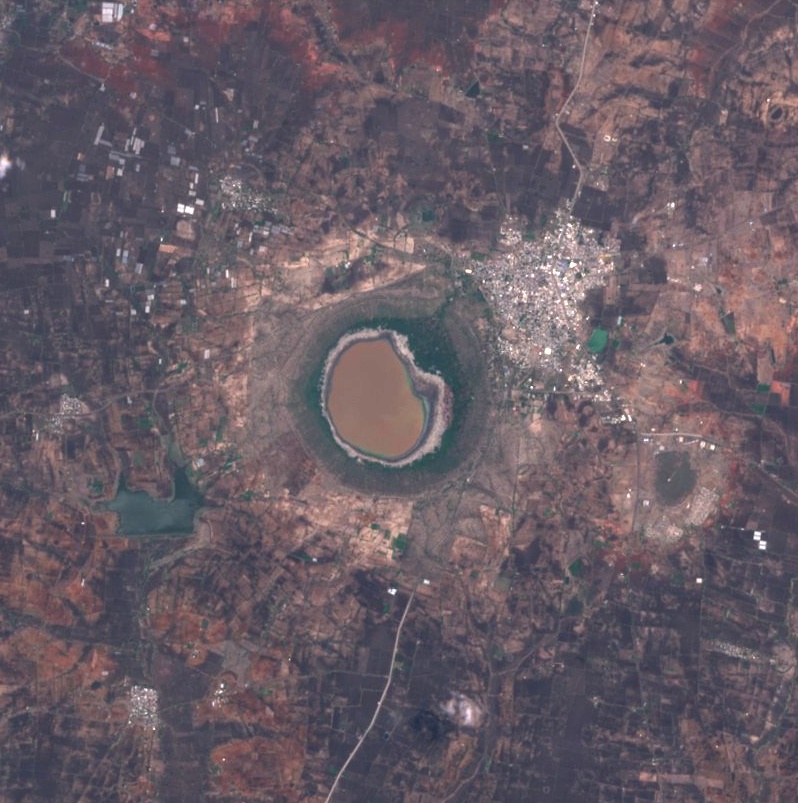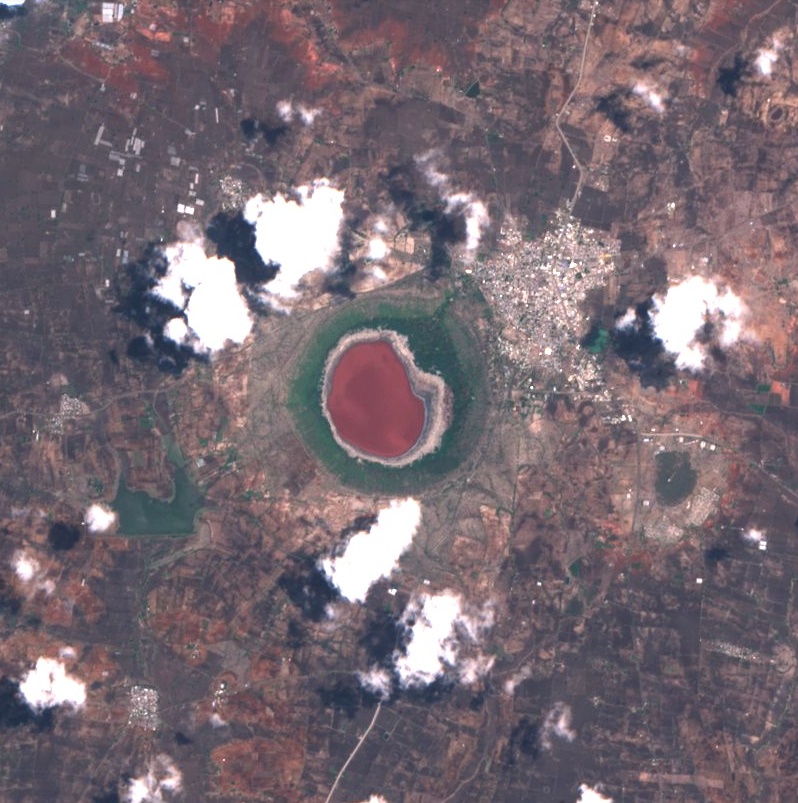50 000-year-old meteorite crater lake turns red overnight, India

Lonar Lake, a meteorite crater lake formed 50 000 years ago in western Maharashtra, India has turned reddish-pink overnight on June 10, 2020, leaving nature enthusiasts stunned. The color change is currently attributed to changing salinity levels and the presence of algae in the water.
The lake is located about 500 km (310 miles) from the financial capital Mumbai and is a famous hotspot for environmentalists and tourists.
Photos of the lake's color transformation began making rounds on social media, from its normal bluish-green color to a reddish-pink shade.

Image credit: Copernicus EU/Sentinel-2, TW. Acquired June 5, 2020

Image credit: Copernicus EU/Sentinel-2, TW. Acquired June 10, 2020
"Salinity in the lake has increased as the water level has gone down drastically this year and it has become warmer too resulting in overgrowth of algae," said geologist Gajanan Kharat in a video posted by Maharashtra Tourism Development Corporation.
"This algae turns reddish in warmer temperatures and hence the lake turned pink overnight," he further explained.
The state's forest department has collected water samples from the lake to identify the exact reason behind the alteration.
#LonarLake also known as #Lonarcrater turns PINK due to high #Salinity and action of #algae but it needs to be confirmed.
Geo heritage monument located in #buldana district, #Maharastra
52000 years old #LonarLake was created by an #Asteroid collision. pic.twitter.com/rCuMqEoWlU
— Ajeet Kumar (@Ajeet_Kumar7) June 12, 2020
Here is a video by Mr.Gajanan Kharat, Geologist, explaining to us why the colour of #LonarCrater Lake has changed. #LonarLake #MaharashtraTourism #MaharashtraUnlimited #Lonar pic.twitter.com/plZx7YFnF8
— Maharashtra Tourism (@maha_tourism) June 11, 2020
Some professionals are also linking reduced human activity due to coronavirus lockdown as a reason for speeding up natural processes at the lake.
"There wasn't much human activity due to lockdown which could also have accelerated the change," said Madan Suryavashi, head of the geography department at Maharashtra's Babasaheb Ambedkar University.
"But we will only know the exact causes once our scientific analysis is complete in a few days."
Lonar Lake is classified as a National Geo-heritage monument. It has a maximum length of about 1 828 (6 000 feet) and a maximum depth of 150 m (490 feet).
Featured image credit: Copernicus EU/Sentinel-2, TW. Acquired June 10, 2020

Commenting rules and guidelines
We value the thoughts and opinions of our readers and welcome healthy discussions on our website. In order to maintain a respectful and positive community, we ask that all commenters follow these rules.